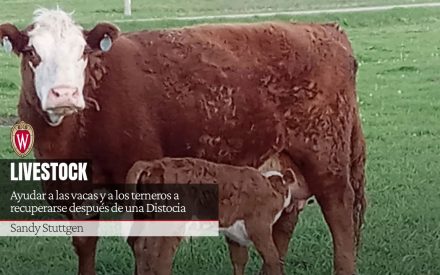Synchronization protocols evolve rapidly as newer procedures are tested and improvements are made. To help veterinarians and industry professionals deal with rapid change and make informed decisions related to synchronization protocols, the Dairy Cattle Reproduction Council (DCRC) has created synchronization protocol sheets for dairy cows and dairy heifers. The documents outline established, research-based, synchronization protocols to help dairy producers improve on-farm reproductive performance.
The latest version of the recommended synchronization protocols for lactating dairy cows and dairy heifers in both English and Spanish are available as free downloads from the DCRC website at https://www.dcrcouncil.org/protocols/
The DCRC is focused on bringing together all sectors of the dairy industry, producers, consultants, academia, and allied industry professionals, for improved reproductive performance. DCRC provides an opportunity for all groups to work together to take dairy cattle reproduction to the next level.
Links to protocols are intended to educate and inform dairy managers, veterinarians, and dairy consultants on available options. They do not advocate for one protocol over another. In addition, they do not prescribe the mix of estrus detection and synchronization each herd should use, acknowledging each dairy farm has unique opportunities and challenges to manage reproduction.
Synchronization compliance
Farm managers not only need to consider which synchronization protocol fits their goals and labor, but just as importantly, they need to ensure protocols are being followed for them to be successful.
Synchronization protocol compliance means:
- Finding the right cow
- Administering the correct reproductive hormone at the correct dose
- Administering each injection at the correct time on the correct day
- Following through on each and every step from the first injection to the cow receiving artificial insemination (AI)
Clear and accurate animal identification, employee training, safe and efficient animal handling equipment, maintaining a record-keeping system and updating it regularly, maintaining product labels, and providing staff with the right tools for the job (needles, syringes, gloves, etc.) are all pieces of the puzzle in achieving protocol compliance. Tracking 21-day pregnancy rates, AI submission rates, and conception risk are necessary to determine if compliance is being met.
When is good, good enough? Most of us would argue a grade of 95% or even 90% is “still an A.” But what if we only gave each dose correctly in a synch protocol 95% or 90% of the time?
Missing 5% to 10% of the cows, or 5% to 10% of injections, adds up, and adds up quickly. Just missing 5%, we are only 86% compliant across the whole protocol in a 3-injection protocol and 70% in a 7-injection protocol. When we miss 10%, we are only 73% compliant in a 3-injection protocol and 48% compliant in a 7-injection protocol. We quickly can see that good enough really isn’t good enough at all (Figure 1).
Figure 1. Compliance example Double Ovsynch
| GnRH | PGF | GnRH | GnRH | PGF | GnRH | Timed AI | = 70% compliance across the protocol |
| 95% x | 95% x | 95% x | 95% x | 95% x | 95% x | 95% |
To learn more about synchronization protocols and protocol compliance, or to start the conversation with your farm’s staff, visit our Dairy Workers Training modules on dairy cattle reproduction at: https://go.wisc.edu/dwt


 ¿Seguimos necesitando la regla A. M. / P. M.?
¿Seguimos necesitando la regla A. M. / P. M.? Do we still need the AM-PM Rule for the artificial insemination of cattle?
Do we still need the AM-PM Rule for the artificial insemination of cattle? Ayudar las vacas y a los terneros a recuperarse después de una Distocia
Ayudar las vacas y a los terneros a recuperarse después de una Distocia


